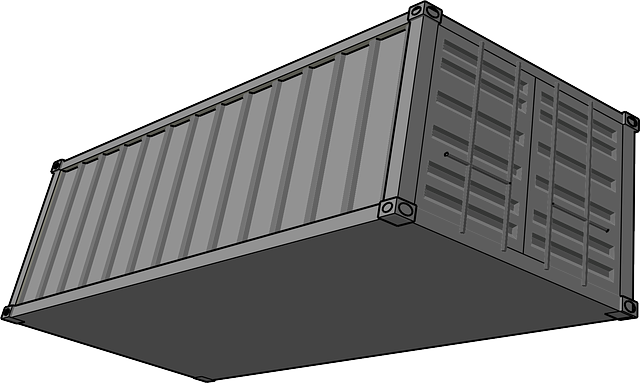In the high-risk trucking industry, comprehensive trucking business employee insurance is essential for effective workers' compensation planning. This includes coverage for unique risks like accidents involving heavy vehicles and loads, medical expenses, lost wages, disability benefits, and liability protection against third-party claims. A robust strategy involves identifying common and uncommon hazards through risk assessments, implementing safety protocols, regular vehicle maintenance, and thorough incident documentation. Regular reviews and updates are crucial to maintain compliance with evolving regulations, reduce compensation claims, and ensure optimal protection for both employees and the business.
Creating a comprehensive workers’ comp plan is essential for any trucking business aiming to protect its most valuable asset—its employees. This guide offers professional tips on navigating the intricacies of trucking business employee insurance, establishing a robust foundation for risk management. From understanding industry-specific challenges to crafting tailored coverage and ensuring ongoing compliance, these strategies are designed to maximize protection and mitigate potential liabilities.
Understanding Trucking Business Employee Insurance: A Foundation for Comprehensive Workers' Comp

In the dynamic and often high-risk world of trucking, understanding trucking business employee insurance is paramount for comprehensive workers’ compensation planning. This type of insurance goes beyond basic coverage to encompass specific risks unique to the industry, such as on-the-job accidents involving heavy vehicles or loads. By thoroughly comprehending these insurance options, businesses can establish a robust foundation for their workers’ comp plans.
A well-rounded trucking business employee insurance strategy should consider various coverage areas, including medical expenses, lost wages, and disability benefits for employees injured or disabled during work. It also includes liability protection against potential third-party claims resulting from accidents involving company vehicles or employees. This holistic approach ensures that both the employer and employees are protected, fostering a safer and more secure working environment.
Assessing Risk: Identifying Potential Hazards in the Trucking Industry

In the trucking industry, where employees face unique risks on the road daily, assessing and managing these hazards is a critical step in creating an effective workers’ comp plan. Professional insurance advisors recommend a thorough evaluation of your trucking business’s operations to identify potential hazards. This process involves understanding the specific risks associated with different aspects of your work, from driving long-haul routes to loading and unloading cargo. By pinpointing these hazards, you can tailor your insurance coverage to address them adequately.
Focus on identifying both common and uncommon risks. For instance, drivers may face dangers like fatigue, adverse weather conditions, or vehicle malfunctions. Additionally, consider workplace injuries related to the handling of heavy equipment, loading/unloading procedures, or even on-site accidents at terminals or depots. A comprehensive risk assessment will help you make informed decisions when designing your workers’ comp strategy, ensuring that your trucking business and its employees are adequately protected by employee insurance.
Crafting a Tailored Workers' Compensation Plan: Strategies for Effective Coverage

Crafting a comprehensive workers’ compensation plan tailored to your trucking business is essential for protecting both your employees and your company from financial strain in the event of workplace injuries or illnesses. Start by assessing the unique risks inherent in the trucking industry, such as long hours on the road, heavy equipment operation, and exposure to various weather conditions. These factors contribute to a higher risk of accidents and claims, making specialized coverage crucial for your employee insurance needs.
Consider implementing strategies like offering ergonomic training to prevent workplace-related injuries, establishing clear safety protocols for loading and unloading, and providing regular vehicle maintenance checks. Additionally, keep records of all incidents, even minor ones, as they can be valuable in identifying recurring hazards and refining your compensation plan accordingly. Regularly reviewing and updating your policy will ensure that it remains effective, offering adequate protection for your trucking business and its employees.
Implementation and Ongoing Management: Ensuring Compliance and Maximizing Protection

Implementing a workers’ compensation plan is just the first step; ongoing management is crucial to ensure its effectiveness and stay compliant with ever-changing regulations, especially for trucking businesses with employee insurance. Regularly reviewing and updating the plan is essential to accommodate growth, new risks, and industry updates. Stay informed about state-specific requirements and industry trends to tailor your plan accordingly.
Effective management involves clear communication and training for all employees. Educate them on their rights and responsibilities regarding workers’ comp, ensuring a smooth process if an accident occurs. Prompt reporting of injuries and regular medical evaluations can maximize protection, minimizing compensation claims and potential legal issues.
Creating a robust workers’ compensation plan for a trucking business is not just a legal necessity but an investment in your employees’ well-being and your company’s future. By understanding the unique risks of the industry, such as long hours, heavy machinery, and varied work environments, you can craft a tailored insurance plan that provides comprehensive coverage. Implementing this plan requires ongoing management to ensure compliance with ever-changing regulations while maximizing protection for both your business and your workforce. Investing in trucking business employee insurance is a proactive step towards building a safe and thriving work environment.
